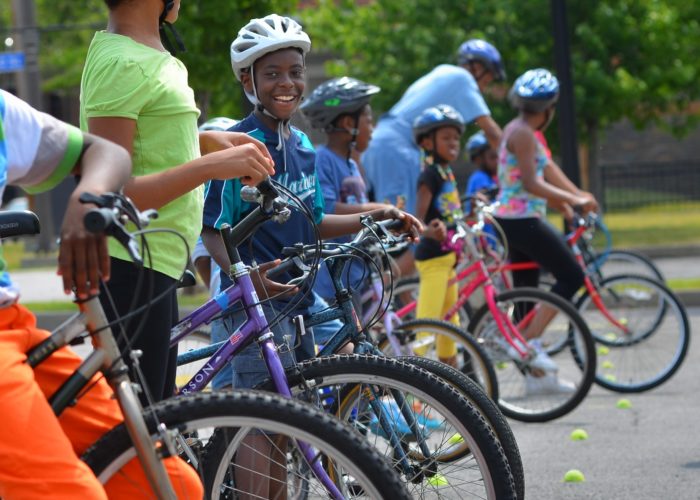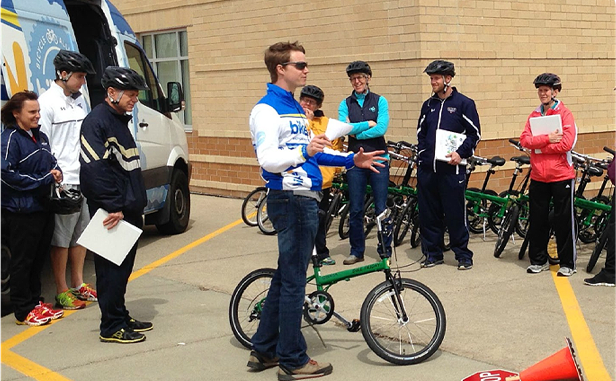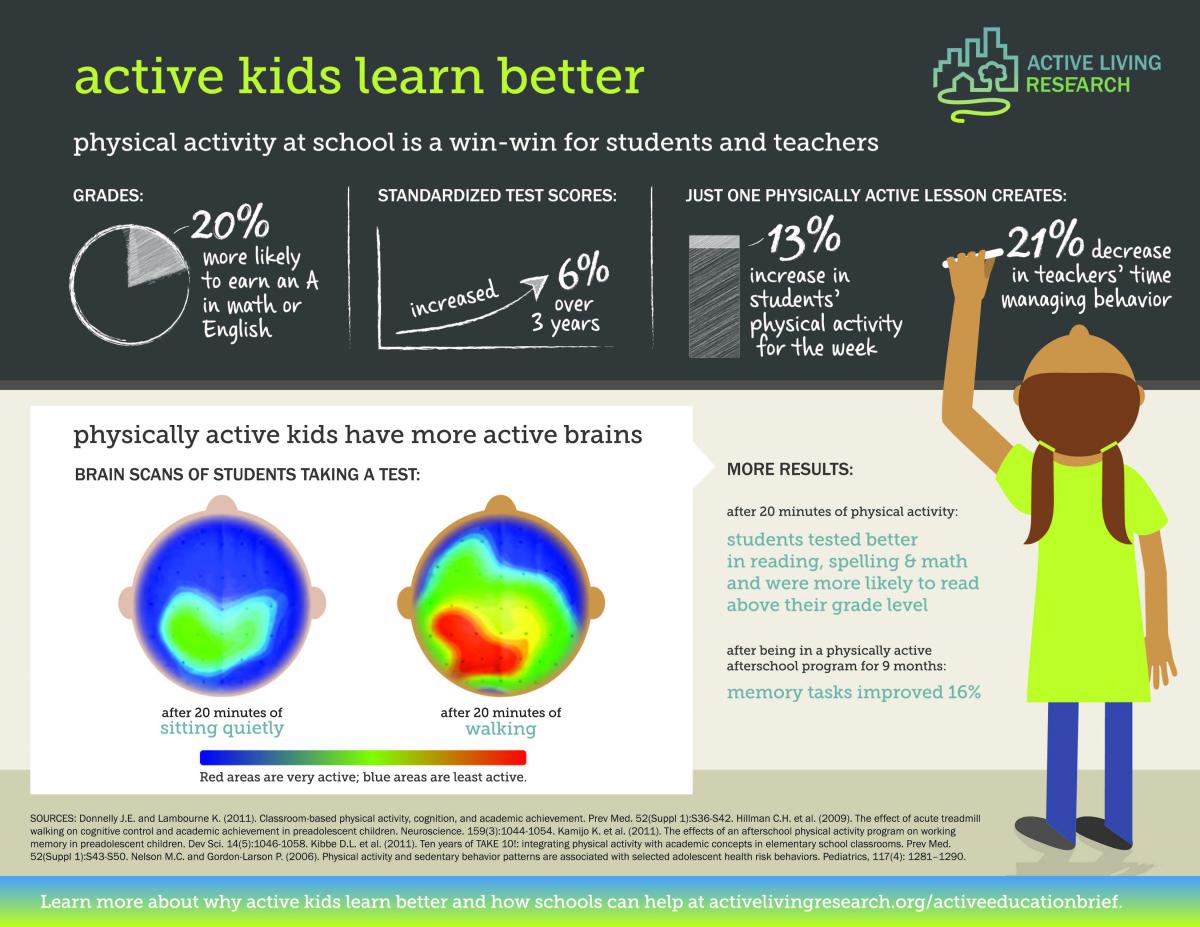Walk! Bike! Fun! Educator Hub
Walk! Bike! Fun! helps children ages 5 to 13 to develop life-long skills through fun classroom activities and on-foot and on-bike skills practice.
The WBF program puts priority on teachers first. From a modular curriculum and free trainings to support services – including bike fleets delivered to your school –, Walk! Bike! Fun! is made for teachers who want to get their students moving. Join the hundreds of teachers across Minnesota to get involved.

What’s involved in the curriculum?
This modular curriculum is designed specifically for Minnesota’s schools and is structured to meet Minnesota Physical Education Standards and Benchmarks. Walk! Bike! Fun! (WBF) is an integral part of the MN Safe Routes to School Program and sponsored by MnDOT. The program was developed and has been implemented by the Bicycle Alliance of Minnesota (BikeMN), a statewide nonprofit organization that teaches Minnesotans of all ages to safely ride and share the streets and trails with other drivers and pedestrians. We provide support to help make your program a success.
WBF students will learn traffic rules and regulations, potential hazards to traveling on foot or on bike and physical skills needed to bike and walk safely and confidently through their community.
What do students get?
- Learn basic rules and concepts of traffic
- Recognize potential hazards to traveling by bike or on foot
- Learn physical skills for safe walking and biking
- Gain experience and confidence for traveling within their community.
What do educators get?
- A curriculum that’s easy to tailor to their needs and constraints
- Free and fun trainings that build confidence with hands-on and on-bike learning
- A wide range of support services – coaching, volunteer training, bike fleets delivered
- A network of hundreds of peers who use WBF and are ready to share their tips and experience
Training Opportunities
Educator training is the core of the WBF program. BikeMN hosts local and online trainings of the Minnesota Walk! Bike! Fun! Pedestrian and Bicycle Safety Curriculumfor educators. BikeMN also offers training for WBF Ambassadors (volunteers) and Basic Bike Maintenance for teachers and volunteers participating in WBF.
Sign up for a Training
Standards
The Walk! Bike! Fun! (WBF) curriculum addresses Minnesota Physical Education Standards and Benchmarks. It is written with physical education teachers in mind, but may also be taught in social studies, health, science classes and others.
Distance Learning
Our Walk! Fun! and Bike! Fun! At Home distance learning guides are adapted from our current curriculum. The guides include worksheets and outdoor walking and biking activities. There are resources so that each activity has options of how the student may complete it, depending on available equipment and technology. The Student and Parent/Caregiver Guides are available in Hmong, Somali, Spanish, and English.
We also have a Kids Fun! page with activities that kids can access by themselves and complete to learn more about safe walking and biking skills while having fun.
Research
Walk! Bike! Fun! is a proven education strategy of Safe Routes to School (SRTS). Both WBF and SRTS are essential for students – check out some of the related research to learn more about how Walk! Bike! Fun! can benefit your students and community.

Additional Trainings
Additional training for crossing guards, school patrol, Safe Routes To School workshops and more are available through Minnesota Safe Routes To School.
Six great benefits for children walking or biking to school
Increase Academic Achievement
Research shows that students who exercise before school concentrate better in class.
Increase Happiness
Children that engage in physical activity are more likely to be happy.
Lower Carbon Footprint
A whole school committed to walking and biking can make an enormous impact on reducing carbon dioxide emissions and harmful pollutants.
Help Reduce Traffic Crashes
The benefit of schools that teach walking and bicycling skills result in up to a forty-nine percent decrease in childhood pedestrian and bicycle collision rates.
Foster Independence
Children who walk or bike to school are more likely to walk to other destinations in the neighborhood.
Increase Physical Activity
The CDC recommends that children get sixty minutes of physical activity every day.

